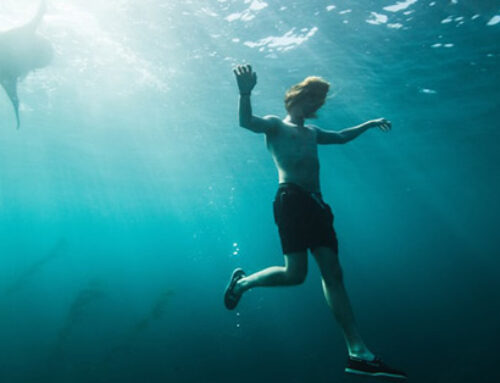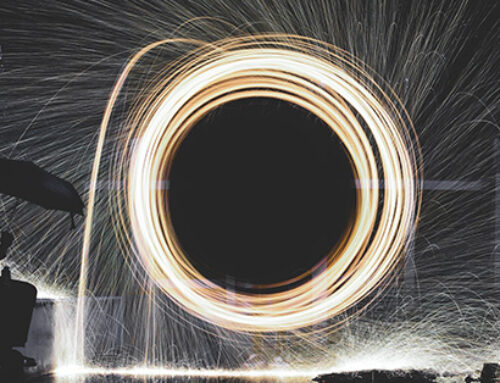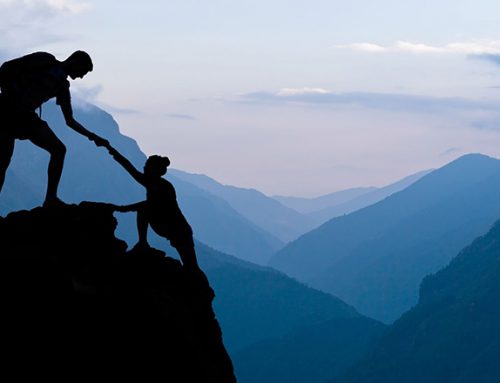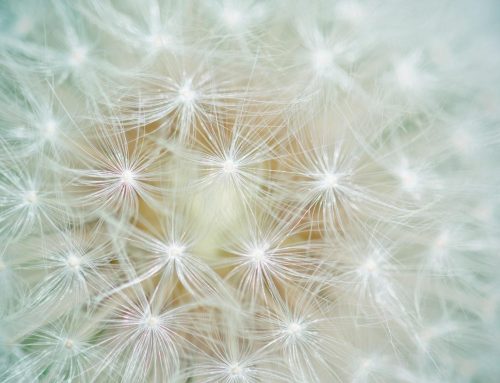So I got published in the Dutch Vogue this month. Which, I must admit, feels like a thing. I’m so grateful to be part of the positive wave of publicity psychedelics are (rightfully) getting. Not just for treating serious mental health issues and addictions, but also as an option for what in the lingo are called ‘healthy normals.’
I’ll translate the article here to the best of my ability, because I can’t wait to share it with my non-Dutch people. And then I’ll comment on it a bit through numbered notes, because -even though I totally get that fashion magazine articles are not the place for nuance and precision- I’m still me ;-).
Here goes:
Happy Trips
Discovering what you really want. Becoming more creative. Being less critical of yourself and others. Working more efficiently. Recovering from burn-out. Having the best relationship ever. Things we’d all like to experience, and it’s at our fingertips: through therapeutic drug use. Silver bullet or dangerous experiment? Vogue does the research.
– by Sara Madou
Yvette de Wit (24) recently graduated from Willem de Kooning Academy as advertiser, with her project Limitless: a drink based on LSD. Yvette: ‘I used to do drugs recreationally sometimes and would notice my ADHD was bothering me less in the days after. It worked better than mainstream medications like Ritalin. That put me on the track of micro-dosing.’ She bought some LSD, did some research into the right dose, and turned it into a potion. She tested it on herself and five others. ‘It made us all more creative, social, energetic and motivated.’ The goal of her thesis project was not to market the product, but to bring the discussion about small doses of psychedelics more to the fore. ‘Laws and policies around this topic are based more on opinion than fact. I did stop micro-dosing, because I’m not comfortable with the illegal aspect of it. The link to crime puts me off. But if Limitless were legal, I’d use it again. And I’m sure many others would, too.’
A tenth is enough
We mostly associate MDMA with getting high during a good rave, and acid with the mind bending 60s, convincing masses of hippies that society should get a total overhaul. But synthetic drugs and psychedelics are slowly but surely re-entering orbit as therapeutic substances. In adapted doses, so you’ll trip, but not too hard. Such micro-doses[1] are being used to have a small but noticeably positive effect on your psyche. From a subtle dose of speed to finish your thesis to a potion based on LSD to deal with trauma or burn-out.
[1] According to James Fadiman (see below) in the Netflix documentary ‘Take your pills’, if you take a micro-dose, “You can expect zero psychedelic effects. the rocks don’t glitter even a little, the flowers have no great interest in you personally. In fact, if you have anything like that, that’s too high a dose.” In that sense the word ‘Such’ doesn’t fit here. The difference between recreational, therapeutic and micro-doses is explained in the first box. And it is slightly unfortunate that the paragraph on micro-dosing begins with the word MDMA, a substance which is not believed to be suitable for that practice.
The term micro-dosing was coined by American psychologist James Fadiman in 2011, in his book with the catchy title: The Psychedelic Explorer’s Guide: Therapeutic and Sacred Journeys. He offers what he believes to be the ideal dose: 10 to 15 micrograms (about 1/10th of a regular dose), to be taken every three days. Then the effect is apparently not so much hallucinogenic but works on a deeper level. Like being in a good mood, having more empathy for those around you, and higher productivity. Ayelet Waldman tried Fadiman’s method for herself and wrote a book about it (see second box): ‘Every third day was ideal. The second day is the best: the happiest and most productive. If you take it every day, you miss that peak. And the third day is good as a point of rest, and to prevent you from developing a tolerance.’
Legitimate means
The effects that micro-dosing can have, are apparently endless if we are to believe the proponents. From diminishing stress and anxiety and better sleep to recovering from burn-out. The number of people that is trying these means to gain more flow in their lives is hard to estimate, because not everyone exactly flaunts their use of mind-altering substances. Although there are exceptions, like Oscar winning actress Frances McDormand (‘I really, really, really love LSD.’) and Silicon Valley heroes Steve Jobs and Bill Gates, who admitted that psychedelics made them even more creative. More and more research supports these claims. For instance, London Imperial College is using brain scans to visualise the effects of LSD. They discovered that it lets the brain think more freely. In other words: it lets you see things in a different light that you couldn’t (or wouldn’t) see before.
Supervised tripping
Should you want to try some of this for yourself, you can. We’re probably all adults here, that can make up their own minds about what they want to do. But you might also be reeling at the idea of therapeutic tripping and micro-dosing.
Even those that wouldn’t shy away from a recreational pill here and there. Because how much would you take, exactly? (You know the internet, with its veritable jungle of opinions) And how would you optimise the benefit of such an experience for your body and mind? That’s where Miriam van Groen (36) comes in. She doesn’t have a medical or psychological background but calls herself trip coach (guidedtripping.com) and supports people who want to dive deeper into their psyche with the help of an adapted dose of psychedelics. Van Groen: ‘I had taken some LSD at a festival and was dancing away, when I suddenly saw myself dancing across from me. I was always perfectionistic, nothing I did was good enough. But looking at that vision of myself from the outside, I saw a really cool person, and it hit me like a ton of bricks: there’s nothing wrong with me. After that I never went back to the same level of self-criticism.’
In her enthusiasm Van Groen told others of her positive experiences with drugs. ‘A friend, who had been interested in trying MDMA but didn’t feel comfortable doing it just like that, asked me if I wanted to sit with him. I helped him formulate questions and intentions around issues in his life. I kept an eye on his physical condition, making sure he drank enough and how his pulse was doing. Because he felt safe his brain was able to open fully. Afterwards he was really grateful and I thought: there’s something to this.’[2]
[2] Well, I didn’t actually check his pulse, but I did keep a general eye on his physical condition. Yes, his mind opened. And so did his heart. And body. And to be fair to my ‘patient 0’: he thought that there was something to it. And kept imploring me to do more sessions with more people. So I finally gave in 😊. More about how I ended up with this amazing job here.
In her practice for guided tripping people use a tailored dose of psychedelics with Van Groen present, in her practice, their home or in nature: ‘We use an amount that has you trip, so you can access a deeper layer of your consciousness, but not too much. Of course I stay sober, but because I have first hand knowledge, I can re-enter that feeling and explain it if necessary.’ She’s not worried about legal repercussions: ‘I don’t sell drugs, I just coach others while they are on them.[3] I have an extensive intake with people before I work with them and they acquire the substance themselves.’ The effects are clear as day to her: ‘People are more compassionate towards themselves and others. To me this form of drug use is mostly suited to people that know what they want to work on, but the ‘how’ seems just out of reach. With a little help, they can embody the solution.[4]’
[3] In the Netherlands, using is not illegal, nor is being with someone who uses. The policy is based on harm reduction and not penalizing having small (user) amounts. More about this here.
[4] That is just one category of possible positive and lasting effects. In sessions (and in general) I do my utmost to create the ideal circumstances for you to step into your joyful empowerment. You can find more elaborate description of the people I work with here.
Ayahuasca and marihuana
Besides chemical psychedelics like LSD and MDMA[5] there are also plant-based drugs that appear to have therapeutic qualities. Marihuana for instance (less stress, better sleep), but also magic mushrooms and ayahuasca. The latter is made from plants from the Amazon and has been around for hundreds of years. It has a very strong effect on your consciousness. In other words: if you ingest it, most likely in the form of a potion, you will enter an intense trip. You will start hallucinating and often the images are accompanied with profound insights. Tori Amos, Lindsay Lohan and Jim Carrey have expressed being fans, and on Netflix you can find a brilliant episode of Chelsea Does in which Chelsea Handles tries it for herself.
[5] MDMA is officially qualified as an empathogen instead of a psychedelic, but it certainly has mind- and heart-opening properties.
Ilonka (38) partook in two ayahuasca-ceremonies: ‘The first time was amazing. It tasted absolutely foul and I sat with a bucket between my knees much of the time, because I had to throw up. But after that I did get to see very clearly how unhealthy my dating habits were. I compared everyone I met to the bar my ex had set, and that wasn’t fair to these other guys. I was really pleased with all these insights. The second time was less of a success. I threw up as much as the first time and had a splitting headache for days, but the insights didn’t come. My mom told me in an hallucination that I had to make better food choices. Gee, thanks. I knew that before I took the stuff.’
The effects of ayahuasca have also been investigated, showing that it has you think more laterally, even if thinking of solutions to your problems seems harder during the trip. Kuypers researched this as well: ‘But only in the acute phase, when people are really under the influence of the plant medicine. I also want to look into the long-term effects.’
To do or not to do?
Before you enthusiastically jump into an ayahuasca ceremony or start micro-dosing LSD, you should read the small print. There are – like with almost anything – ifs and buts, contra-indications and drawbacks. Like the fact that it is mostly illegal and that you often don’t know exactly what you’re getting: the first dealer that puts a list of ingredients on their zip lock baggies is yet to be born. So: always test before you ingest; most smartshops sell test kits. Correct dosing is also important. If you slip up, your micro-dose might turn into a full-blown trip, including hangover. If you have a (family) history of hart issues or psychosis, you’d better pass this one up, however micro the dose. People with anxiety have been known to experience more fear on LSD.
Kuypers: ‘It’s starting to become a hype and with that comes increased danger of misuse. I would advise against experimenting with therapeutic drugs by yourself. Especially if you have no prior experience: participants in our studies are only admitted if they’ve already used recreationally. Psychedelics have a tendency to totally break open whatever trauma is present, and without proper supervision and help it might be difficult to deal with the consequences of that eruption.’
Trip coach Van Groen also warns her clients extensively. ‘When someone comes to me, we always discuss contra-indications: pre-existing psychological and medical issues that increase the risk of adverse effects. If any are present, I advise against using the substance. I also check if someone has realistic expectations. Yes, positive experiences with substantial long-term effects are possible, but it’s not like one micro-dose will have you live happily ever after. The intention people have is also crucial, knowing why you’re doing it, being curious and open towards whatever might show up.’
To sum it up: don’t be afraid to open the drawers of your sub-conscious and rearranging some stuff up in there. You never know what hidden treasure you might find, but also old junk in a drawer that might have better been left closed. In any case: the fact that there’s a positive wave rising in our collective view of certain drugs, is undeniable. Van Groen: ‘I can feel public opinion shifting. There’s so much more possible with drugs than losing your mind at a rave.’[6]
– Author Ayelet Waldman experimented with small doses of LSD to beat her depression and wrote a book about it: A Really Good Day.
– The Multidisciplnary Association for Psychedelic Studies (MAPS) does a lot of research into psychedelic substances. They proved that 59% of alcoholics cut down heavily on their intake of alcohol or even quit outright after short LSD-assisted therapy. Currently they are looking into the effects of the substance on cluster headaches and eating disorders.
– In the 80s MDMA was used by American couples’ therapists, working under the assumption that it would support bonding with each other and the therapist. When the substance was banned, this practice ceased. South Bank University in London did a recent study in which they learned that couples on XTC understood each other better and (especially the men) were more emotional.




